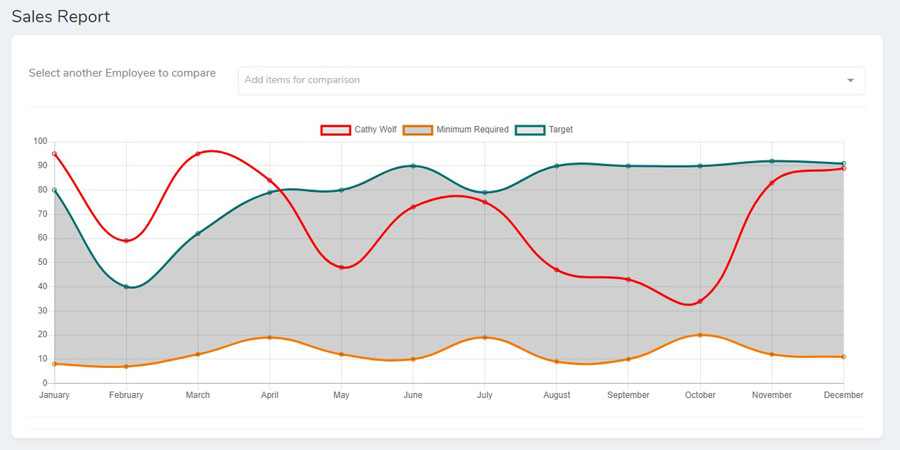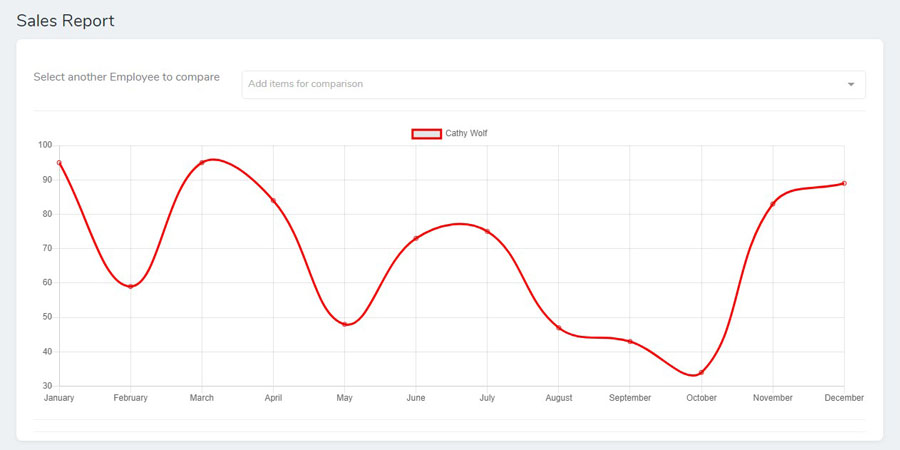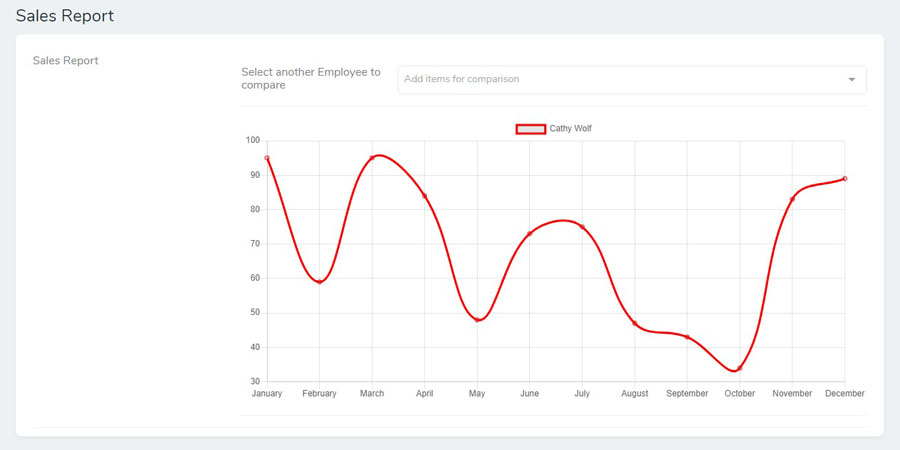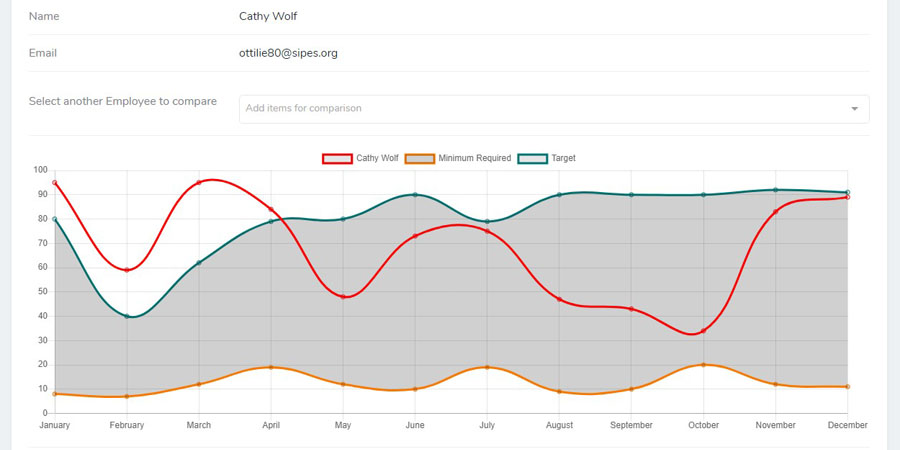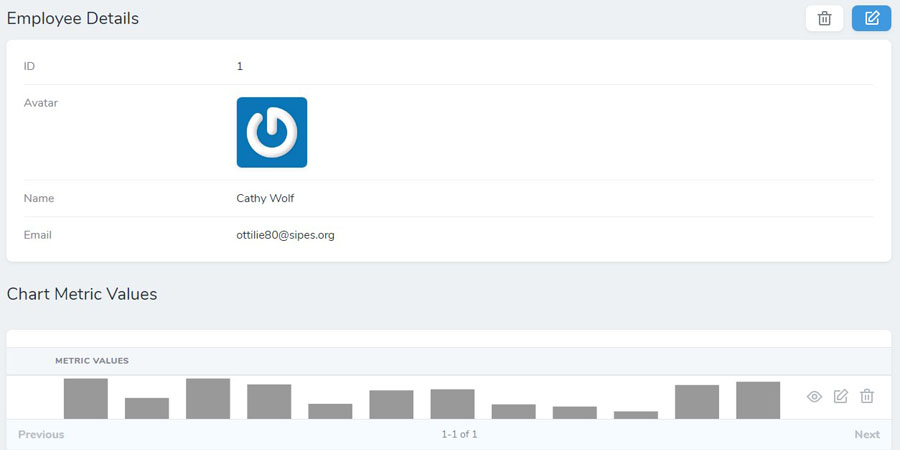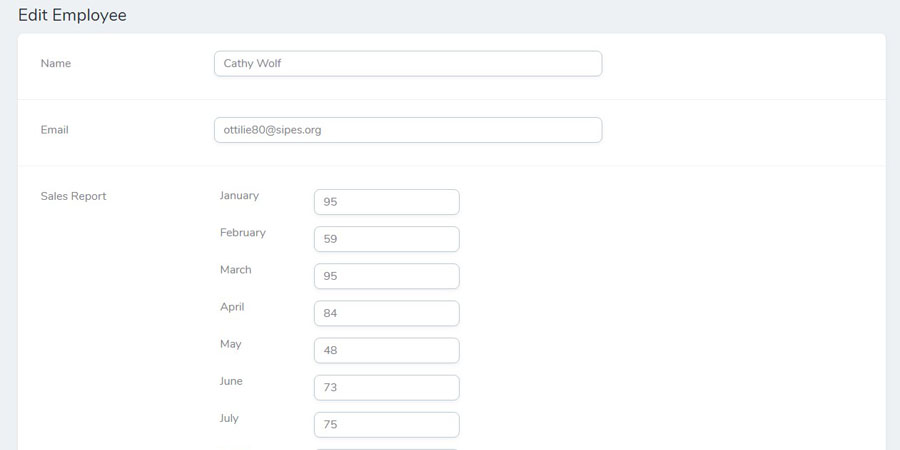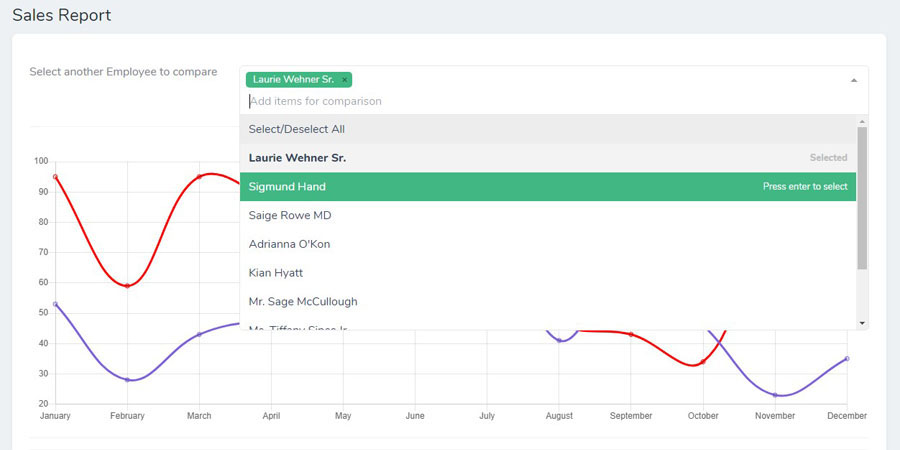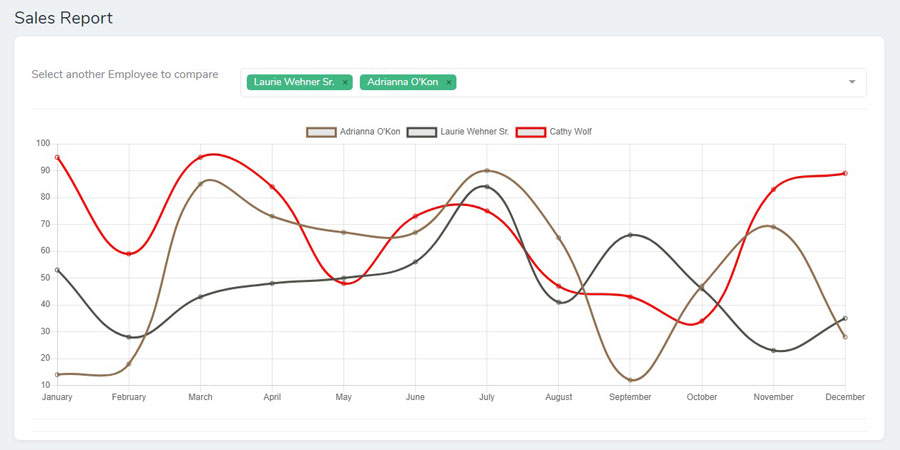kirschbaum-development / nova-chartjs
chart.js Chart Field for Laravel Nova
Installs: 35 883
Dependents: 0
Suggesters: 0
Security: 0
Stars: 51
Watchers: 16
Forks: 5
Open Issues: 18
pkg:composer/kirschbaum-development/nova-chartjs
Requires
- php: ^8.0
Requires (Dev)
- doctrine/dbal: ^2.12
- laravel/legacy-factories: ^1.3
- laravel/nova: ^4.2
- mockery/mockery: ^1.1
- orchestra/testbench: ^7.4
- phpunit/phpunit: ^9.5.10
This package is auto-updated.
Last update: 2025-12-22 00:10:26 UTC
README
Nova Chart.js
Introduction
This package allows you to easily add chart.js graphs to your nova resources. This project is under active development, and currently only supports Line and Bar Charts. You are welcome to request or contribute additional charts by opening an issue.
Requirements
This Nova field requires Nova 2.0 or higher.
Installation
You can install this package in a Laravel app that uses Nova via composer:
composer require kirschbaum-development/nova-chartjs
You'll also need to run migrations to set up a database table for NovaChartjsMetricValue
php artisan migrate
Setup
After setup, your model should include the KirschbaumDevelopment\NovaChartjs\Traits\HasChart trait and you must implement the KirschbaumDevelopment\NovaChartjs\Contracts\Chartable Contract.
You must also define a static getNovaChartjsSettings function in the model which should return the required settings for the Chart. All other required methods and relationship defined in the contract are already defined for you in the included trait. You can also override these trait methods directly on your model.
use KirschbaumDevelopment\NovaChartjs\Traits\HasChart; use KirschbaumDevelopment\NovaChartjs\Contracts\Chartable; class Employee extends Model implements Chartable { use HasChart; /** * Should return settings for Nova Chart in prescribed format * * @return array */ public static function getNovaChartjsSettings(): array { return [ 'default' => [ 'type' => 'line', 'titleProp' => 'name', 'identProp' => 'id', 'height' => 400, 'indexColor' => '#999999', 'color' => '#FF0000', 'parameters' => ['January', 'February', 'March', 'April', 'May', 'June', 'July', 'August', 'September', 'October', 'November', 'December'], 'options' => ['responsive' => true, 'maintainAspectRatio' => false], ] ]; } // ... }
Adding Custom Datsets
You can also add your own custom datasets to the chart by adding a getAdditionalDatasets method on your model
use KirschbaumDevelopment\NovaChartjs\Traits\HasChart; use KirschbaumDevelopment\NovaChartjs\Contracts\Chartable; class Employee extends Model implements Chartable { use HasChart; //... /** * Return a list of additional datasets added to chart * * @return array */ public function getAdditionalDatasets(): array { return [ 'default' => [ [ 'label' => 'Average Sales', 'borderColor' => '#f87900', 'data' => [80, 40, 62, 79, 80, 90, 79, 90, 90, 90, 92, 91], ], ] ]; } // ... }
You can read more about adding custom datasets in the official chart.js documentation
Creating a range chart
To create a range chart you can pass on two additional datasets representing an upper and lower range and set the fill and background color property for the first data point.
use KirschbaumDevelopment\NovaChartjs\Traits\HasChart; use KirschbaumDevelopment\NovaChartjs\Contracts\Chartable; class Employee extends Model implements Chartable { use HasChart; //... /** * Return a list of additional datasets added to chart * * @return array */ public function getAdditionalDatasets(): array { return [ 'default' => [ [ 'label' => 'Minimum Required', 'borderColor' => '#f87900', 'fill' => '+1', 'backgroundColor' => 'rgba(20,20,20,0.2)',//For bar charts, this will be the fill color of the bar 'data' => [8, 7, 12, 19, 12, 10, 19, 9, 10, 20, 12, 11], ], [ 'label' => 'Target', 'borderColor' => '#007979', 'fill' => false, 'data' => [80, 40, 62, 79, 80, 90, 79, 90, 90, 90, 92, 91], ], ] ]; } // ... }
Adding Chart
You can add the chart to your Nova resource in three ways
- Our recommended way of using Nova Chartjs Chart is to add the included Panel
KirschbaumDevelopment\NovaChartjs\InlinePanelto your resource's Nova fields
namespace App\Nova; use KirschbaumDevelopment\NovaChartjs\InlinePanel; class Employee extends Resource { //... public function fields(Request $request) { return [ //... InlinePanel::make($this, $request, 'Chart Name'), ]; } }
NOTE: You must pass the Resource (i.e. $this) and $request to the InlinePanel component.
As an optional argument you can pass a chart name as the third argument, showLabel as fourth argument, notEditable as the fifth argument and hideFromIndex as the sixth argument.
- If you instead want to use the Chart inline without a panel you can do so using this code:
namespace App\Nova; use KirschbaumDevelopment\NovaChartjs\NovaChartjs; class Employee extends Resource { //... public function fields(Request $request) { return [ //... NovaChartjs::make('Panel Name', 'novaChartjsMetricValue', function () { return optional($this->novaChartjsMetricValue()->where('chart_name', $chartName)->first())->metric_values ?? []; }), ]; } }
NOTE: You can pass the name of the chart as the first argument for the make() function. You can also chain the showLabel() and notEditable() methods to show the label and prevent editing the model data via the resource.
Without showLabel() chart will occupy the full width even in Inline Mode.
- You can also display the chart as a relationship table and manage it on a separate page
namespace App\Nova; use KirschbaumDevelopment\NovaChartjs\RelationshipPanel; class Employee extends Resource { //... public function fields(Request $request) { return [ //... RelationshipPanel::make('Chart Name'), ]; } }
Adding Multiple Charts
You can add multiple charts to your Nova resource by specifying a chart identifier.
namespace App\Nova; use KirschbaumDevelopment\NovaChartjs\InlinePanel; class Employee extends Resource { //... public function fields(Request $request) { return [ //... InlinePanel::make($this, $request, 'First Chart'), InlinePanel::make($this, $request, 'Second Chart', 'second_chart') ->showLabel() ->notEditable() ->hideFromIndex(), ]; } }
NOTE: If no explicit identifier is specified default will be used as the identifier for that chart.
You can use the chart identifiers to specify separate additional datasets and settings for each charts.
use KirschbaumDevelopment\NovaChartjs\Traits\HasChart; use KirschbaumDevelopment\NovaChartjs\Contracts\Chartable; class Employee extends Model implements Chartable { use HasChart; /** * Should return settings for Nova Chart in prescribed format * * @return array */ public static function getNovaChartjsSettings(): array { return [ 'default' => [ 'type' => 'line', 'titleProp' => 'name', 'identProp' => 'id', 'height' => 400, 'indexColor' => '#999999', 'color' => '#FF0000', 'parameters' => ['January', 'February', 'March', 'April', 'May', 'June', 'July', 'August', 'September', 'October', 'November', 'December'], 'options' => ['responsive' => true, 'maintainAspectRatio' => false], ], 'second_chart' => [ 'type' => 'bar', 'titleProp' => 'name', 'identProp' => 'id', 'height' => 400, 'indexColor' => '#999999', 'color' => '#FF0000', 'parameters' => ['Q1', 'Q2', 'Q3', 'Q4'], 'options' => ['responsive' => true, 'maintainAspectRatio' => false], ] ]; } // ... }
Settings
You can add following settings to model settings
parameters: It is a list of parameters label for which chart data will be collected. It should be passed as an array. e.g., ["January, "February", "March"]heightandwidth: Dimensions of chart. It is recommended to set height and let chart adjust according to width.color: Color value for the base model in chart.identProp: Model property representing the primary key. defaults toid.labelProp: Model property used for display label in chart. defaults toid.indexColor: Bar Chart color in index view. Falls back tocolortype:lineorbar. defaults toline.options: Options are passed directly to ChartJS instance can be used to customize your Chart as detailed in the documentation
Adding Chart Data
After setup, to add chart data for any model, all you need to do is to edit the model after creating it. You will get a list of numeric inputs to add values for each parameter specified in settings.
Chart data will also show on Model Index page as a Simple Bar Chart
Comparing Models
You can compare other related models to the current model using the comparison dropdown
You can add or remove any model to comparison to checkout how models are stacked against each other.
Changing Comparison Data
Chart comparison data is fetched through trait using a static function getNovaChartjsComparisonData. You can override this function in your model to change the comparison data.
namespace App; use KirschbaumDevelopment\NovaChartjs\Traits\HasChart; use KirschbaumDevelopment\NovaChartjs\Contracts\Chartable; class Employee extends Model implements Chartable { use HasChart; //... /** * Return a list of all models available for comparison to root model * * @return \Illuminate\Database\Eloquent\Collection */ public static function getNovaChartjsComparisonData(): array { return static::with('novaChartjsMetricValue') ->has('novaChartjsMetricValue') ->get() ->map(function ($chartData) use ($chartName) { $chartData->setAttribute( 'novaChartjsComparisonData', optional($chartData->novaChartjsMetricValue()->where('chart_name', $chartName)->first())->metric_values ); return $chartData; }) ->reject(function ($chartData) { return empty($chartData->novaChartjsComparisonData); }) ->values() ->toArray(); } }
Changelog
Please see CHANGELOG for more information on what has changed recently.
Contributing
Please see CONTRIBUTING for details.
Security
If you discover any security related issues, please email brandon@kirschbaumdevelopment.com or nathan@kirschbaumdevelopment.com instead of using the issue tracker.
Sponsorship
Development of this package is sponsored by Kirschbaum Development Group, a developer driven company focused on problem solving, team building, and community. Learn more about us or join us!
License
The MIT License (MIT). Please see License File for more information.



